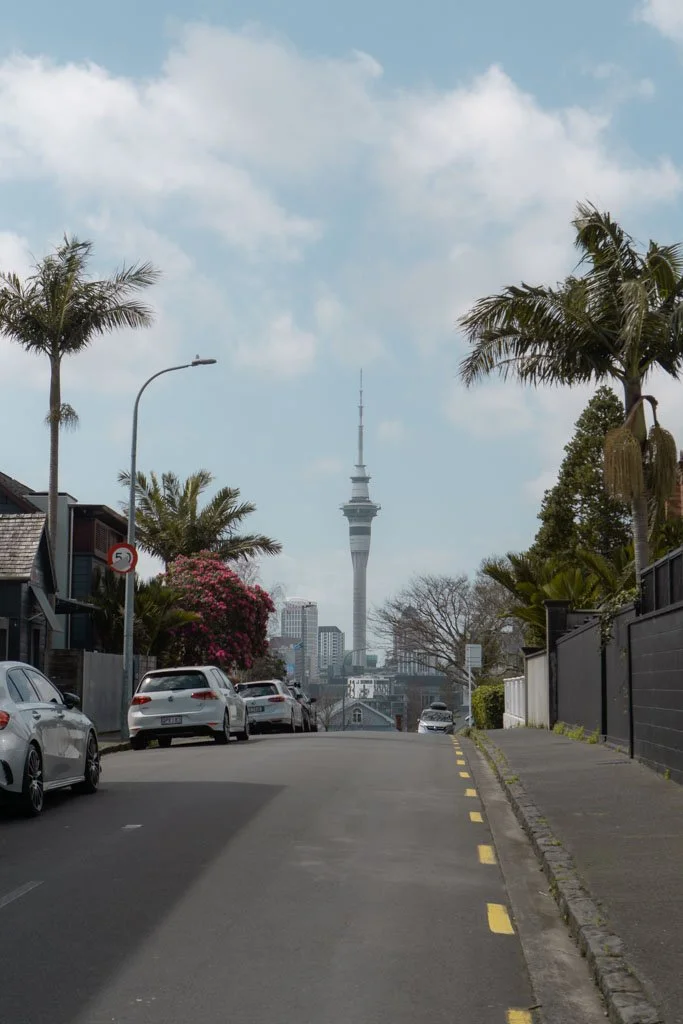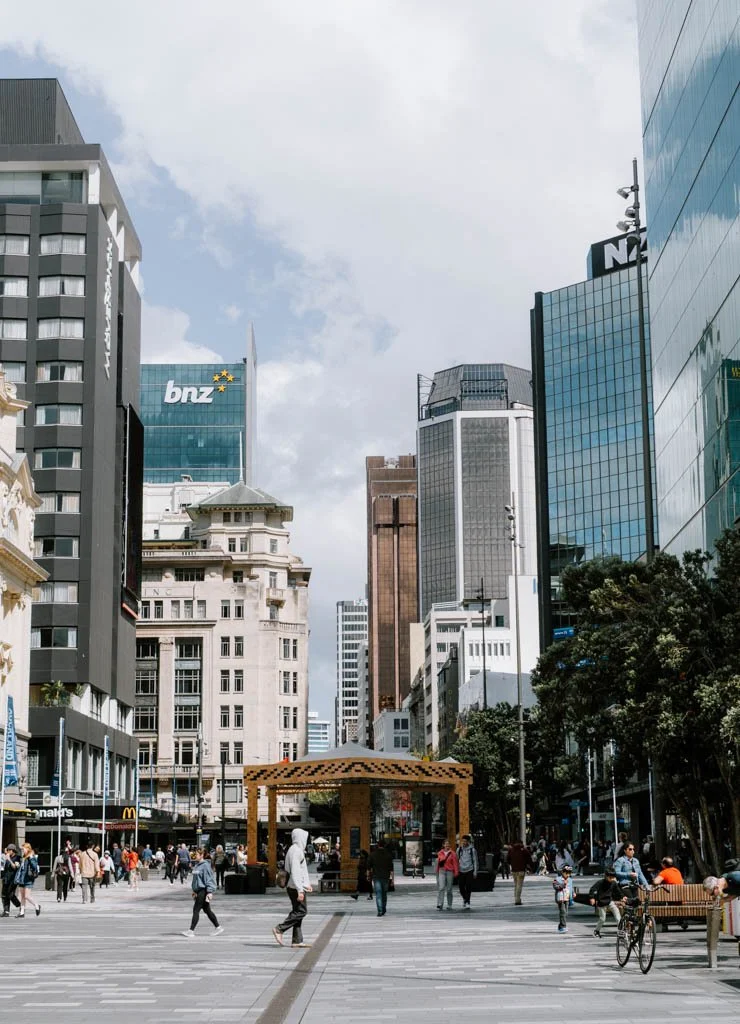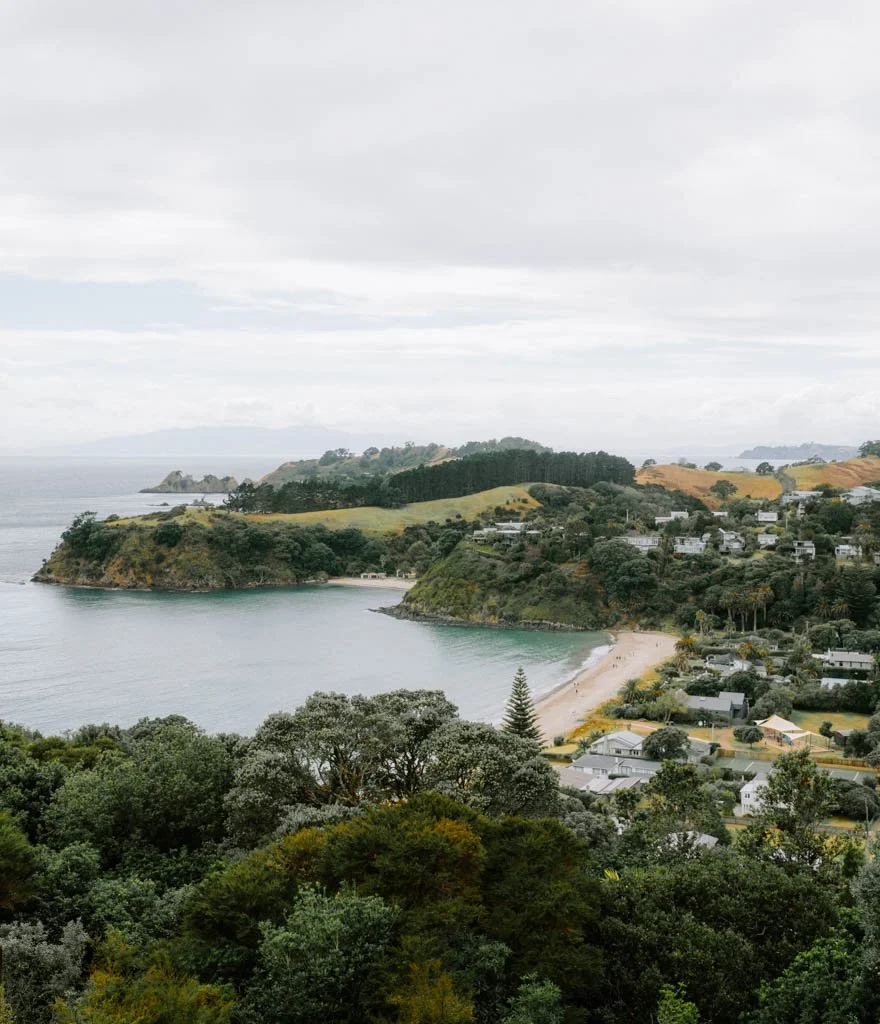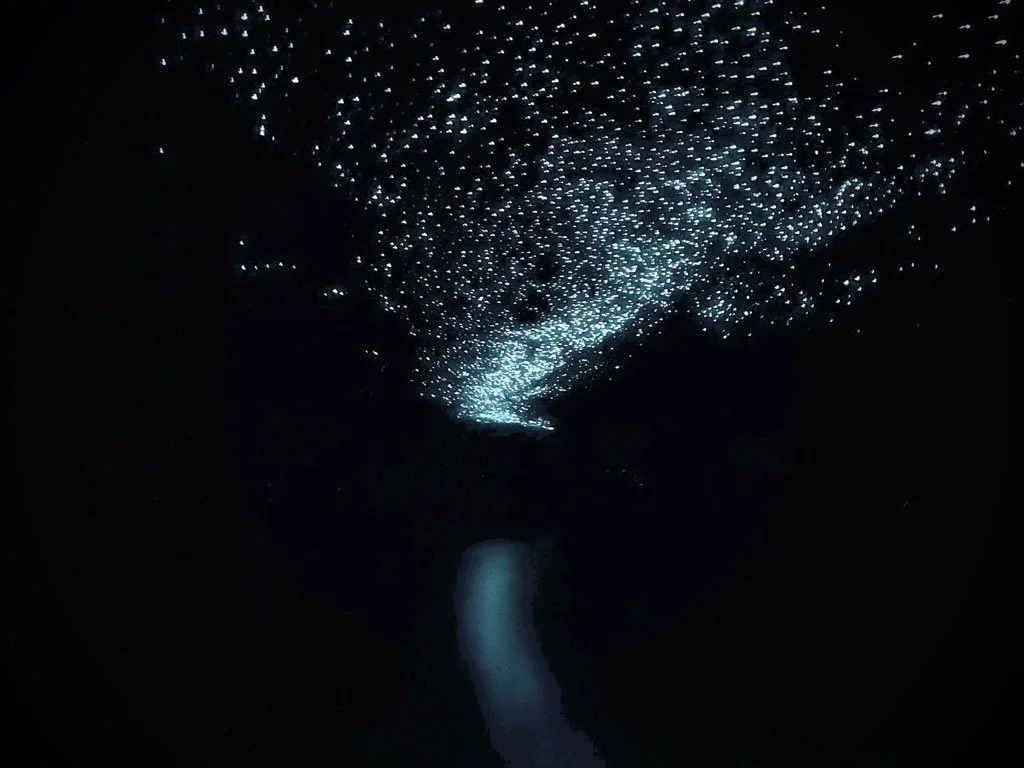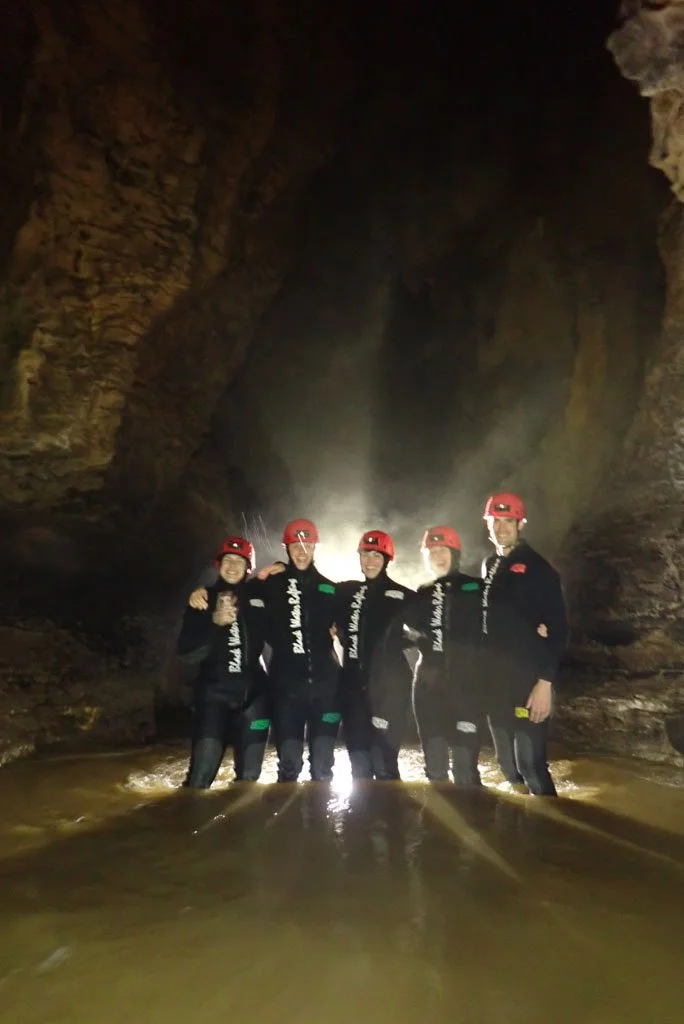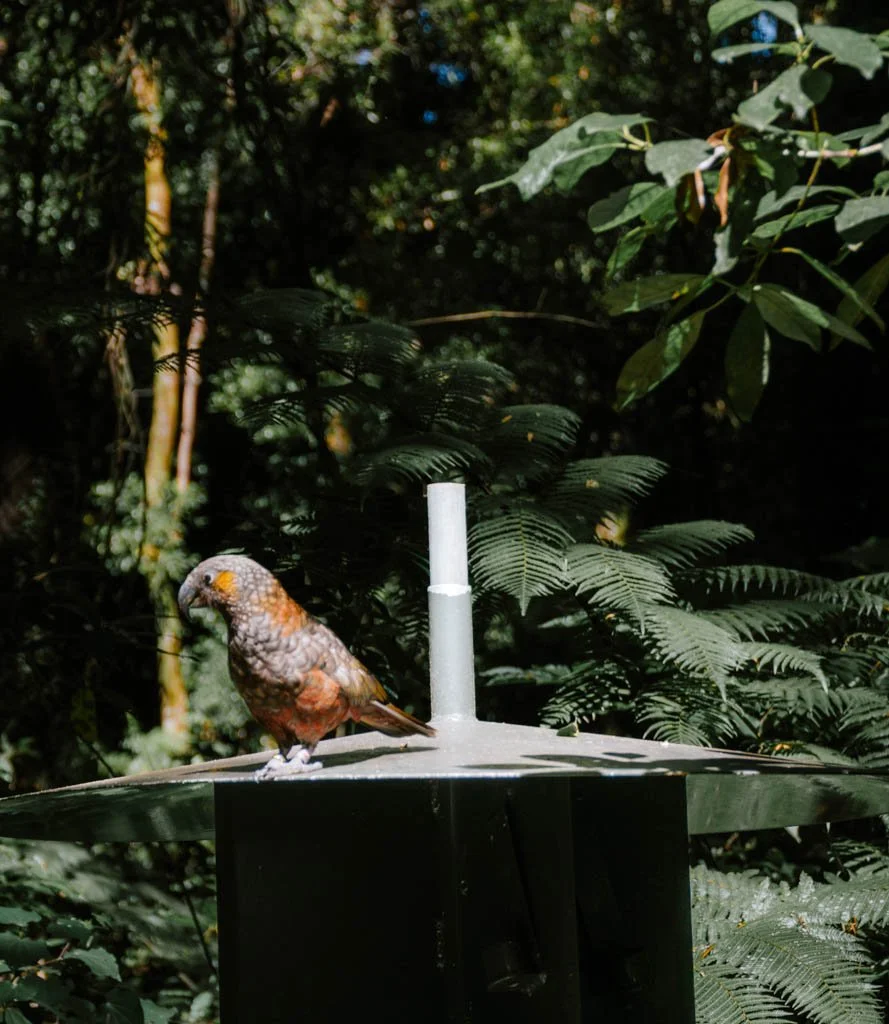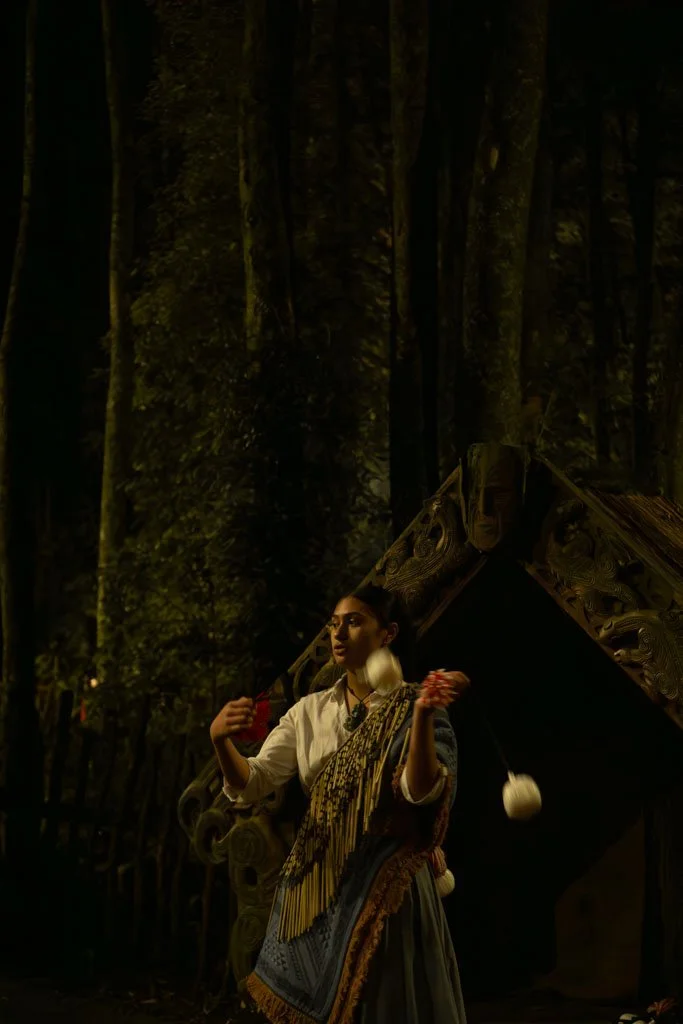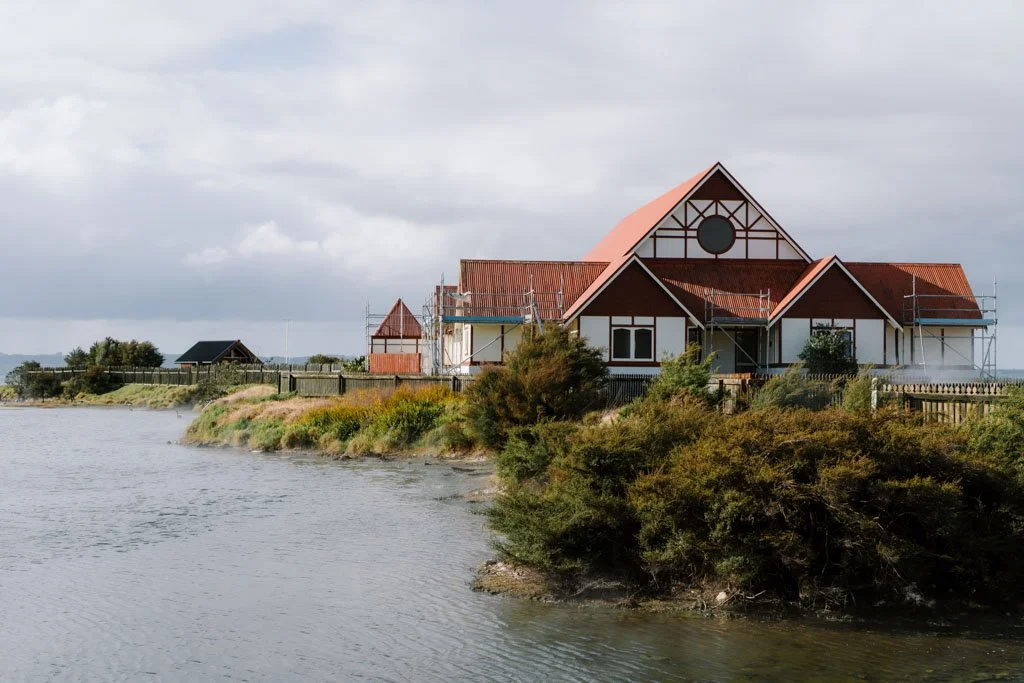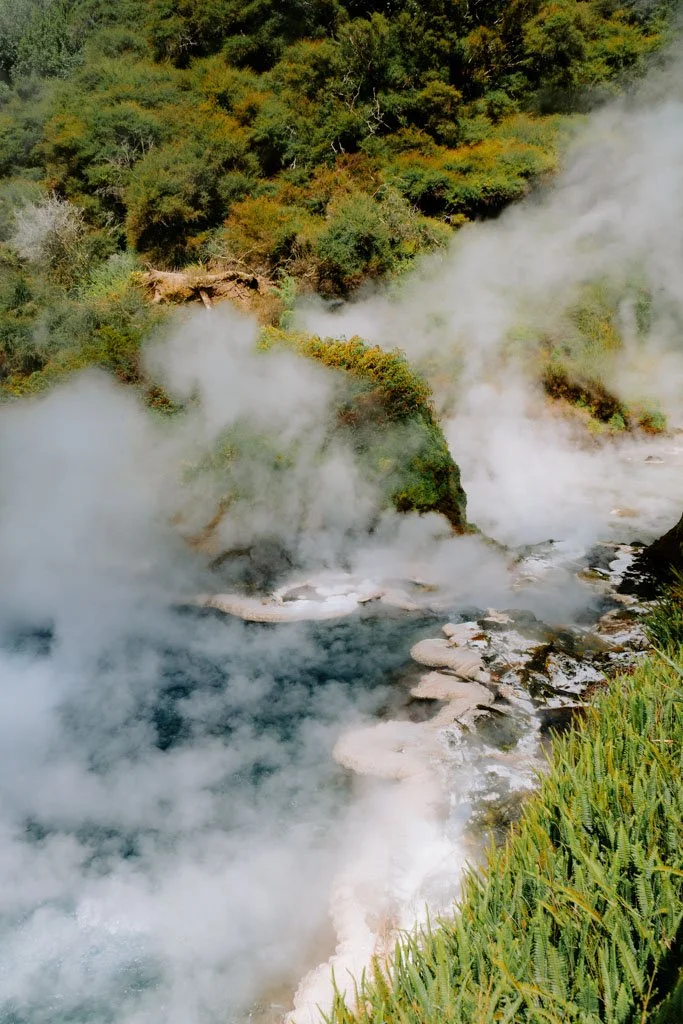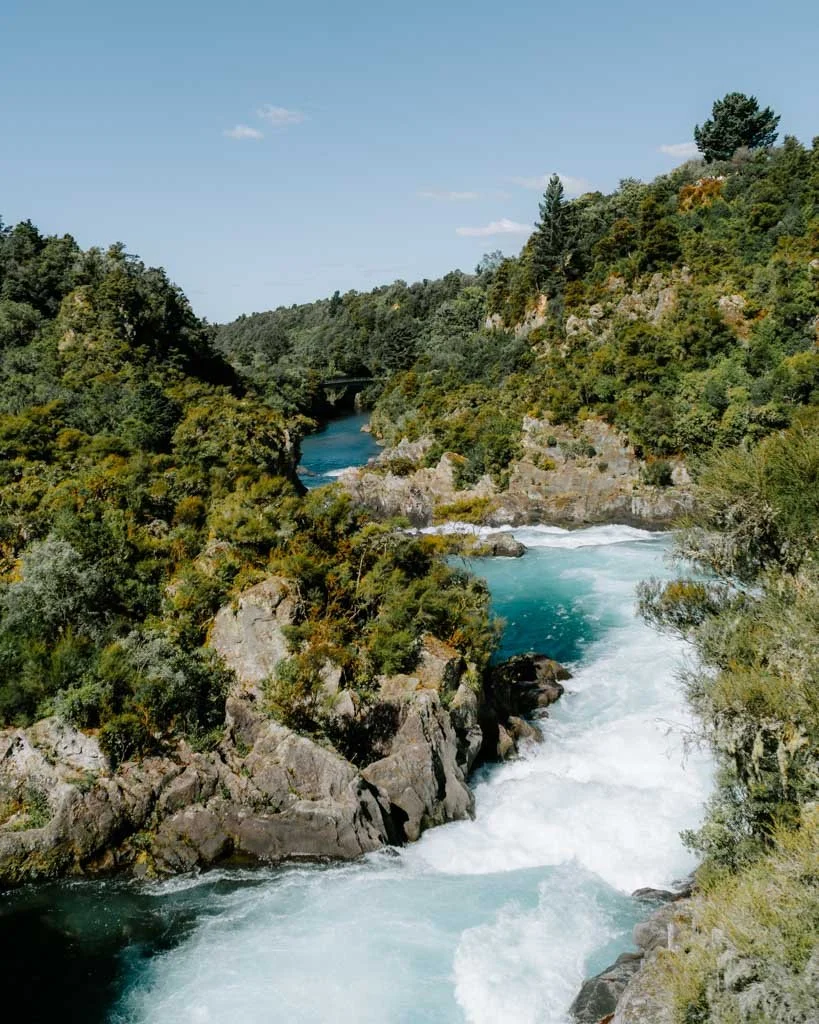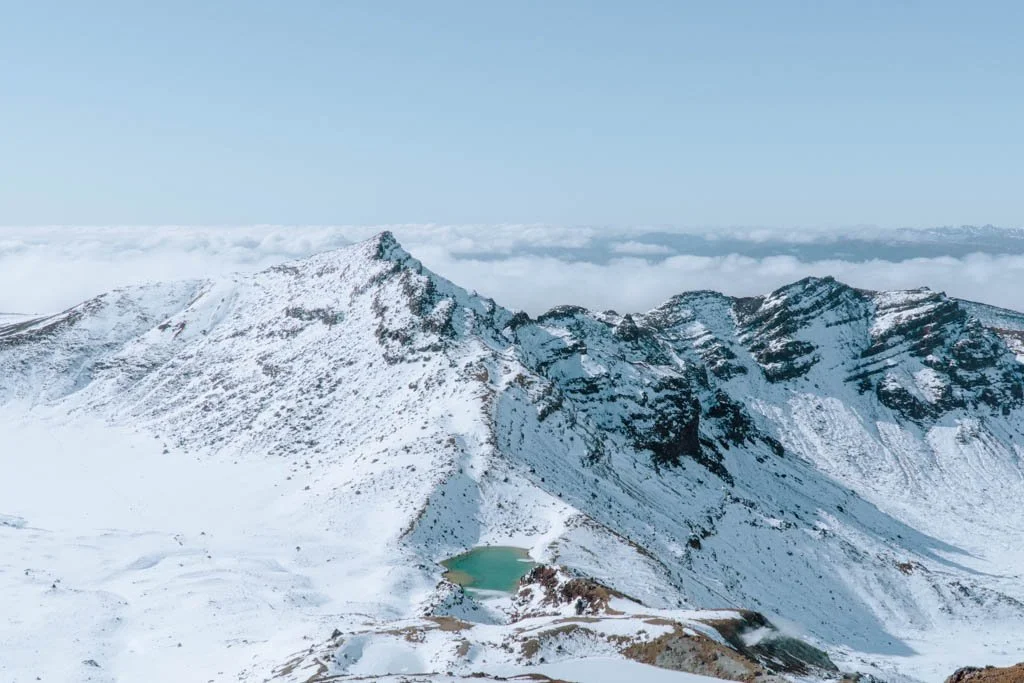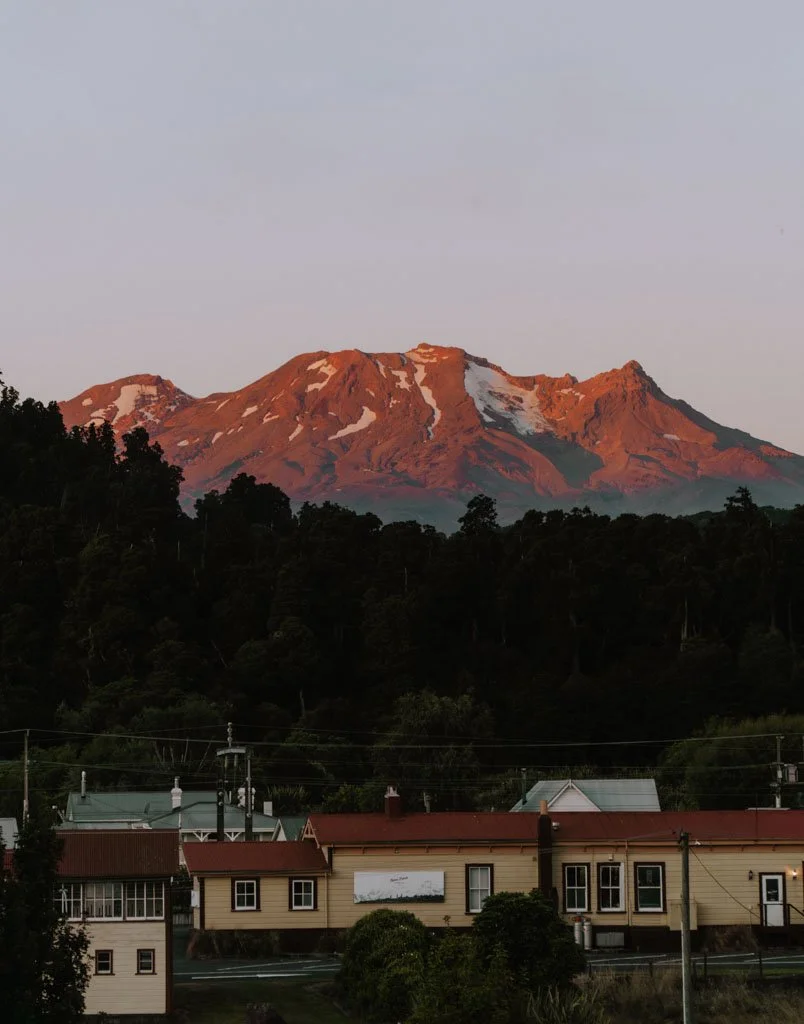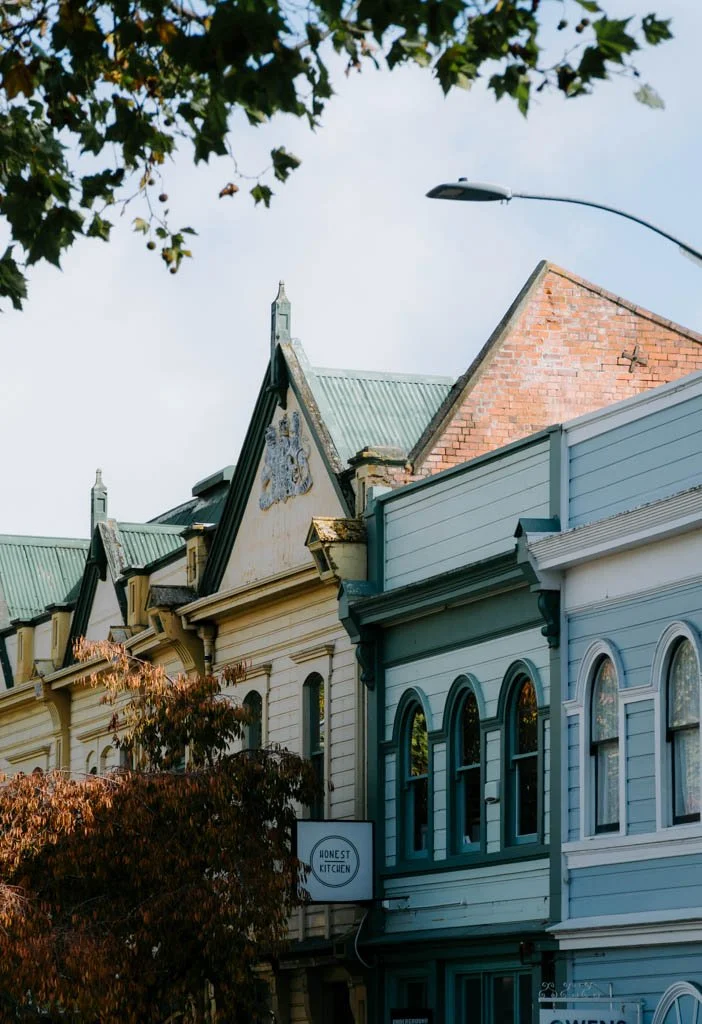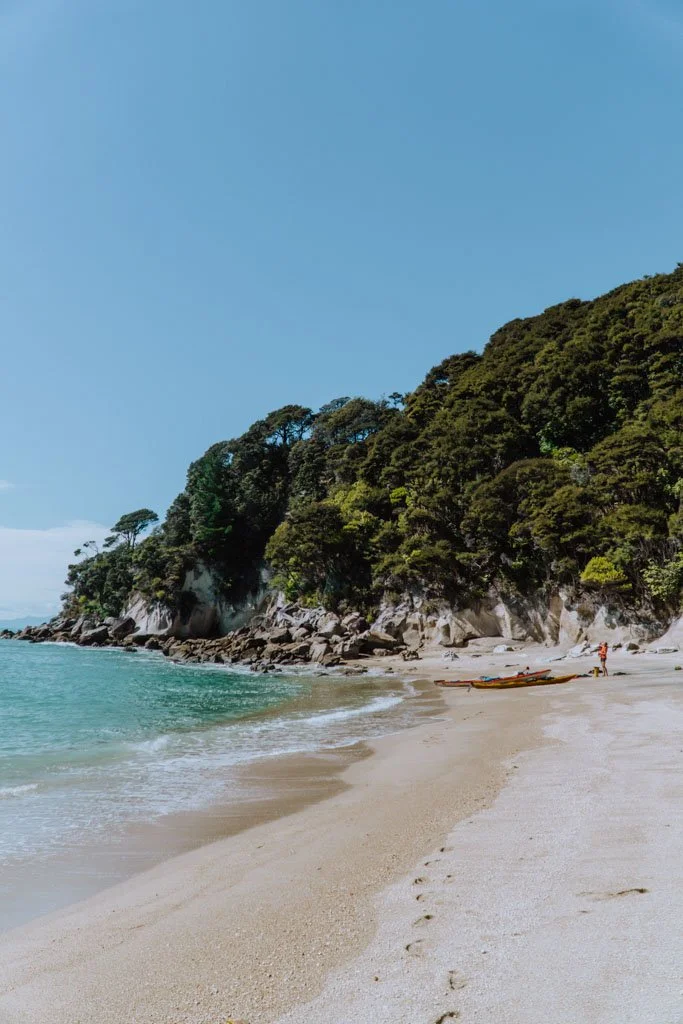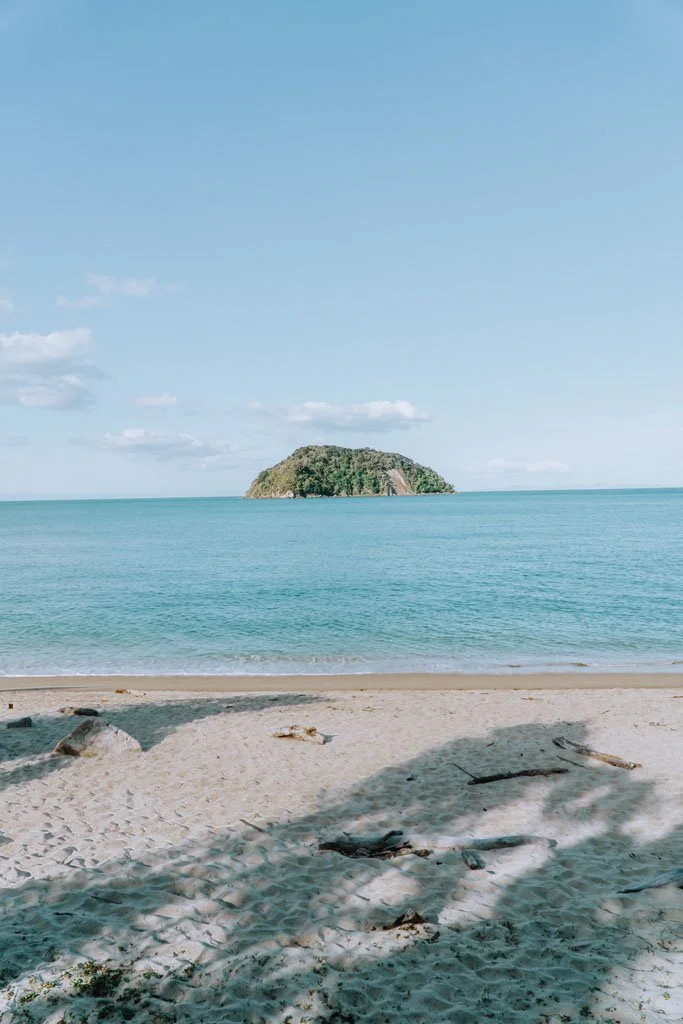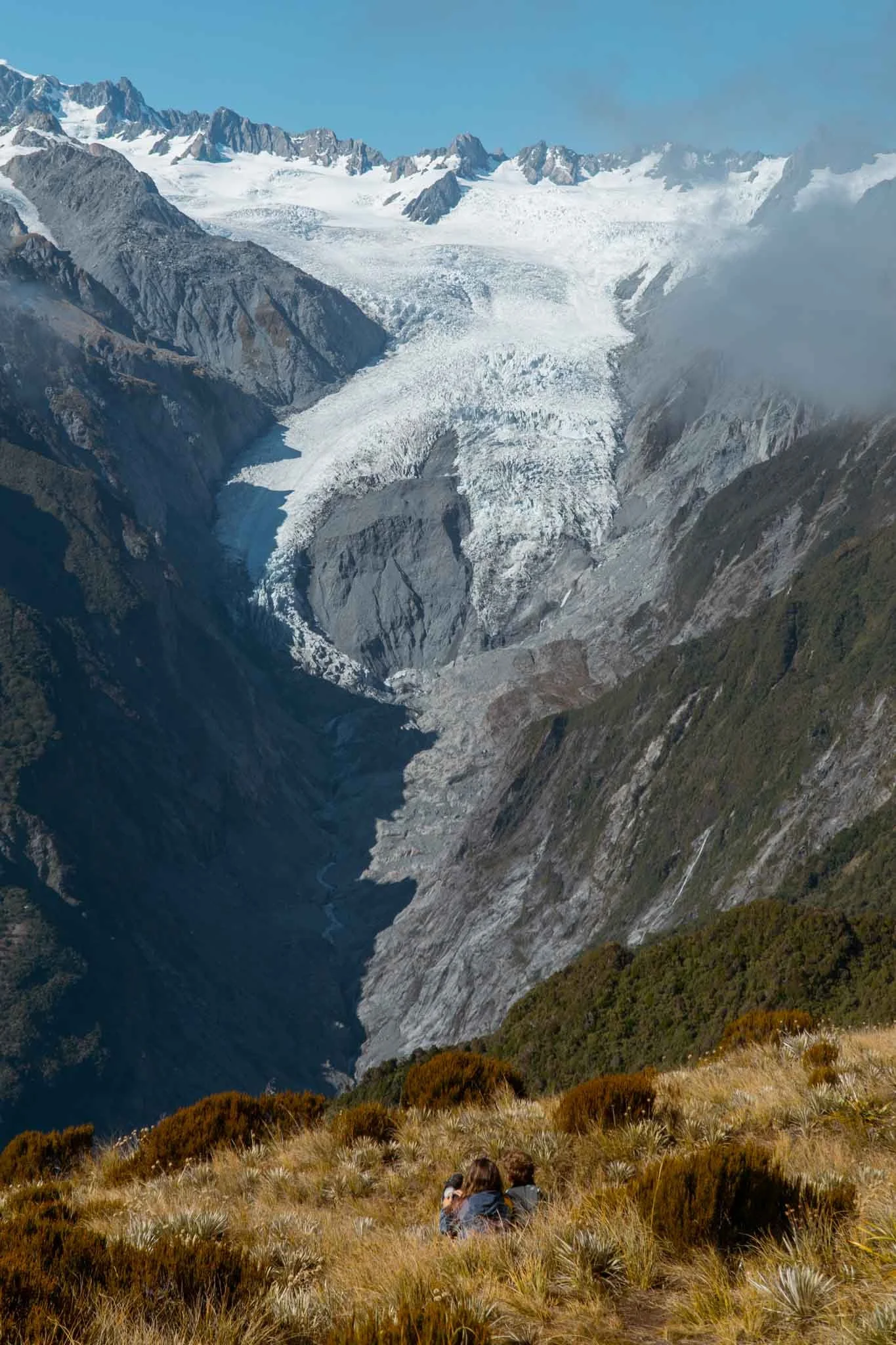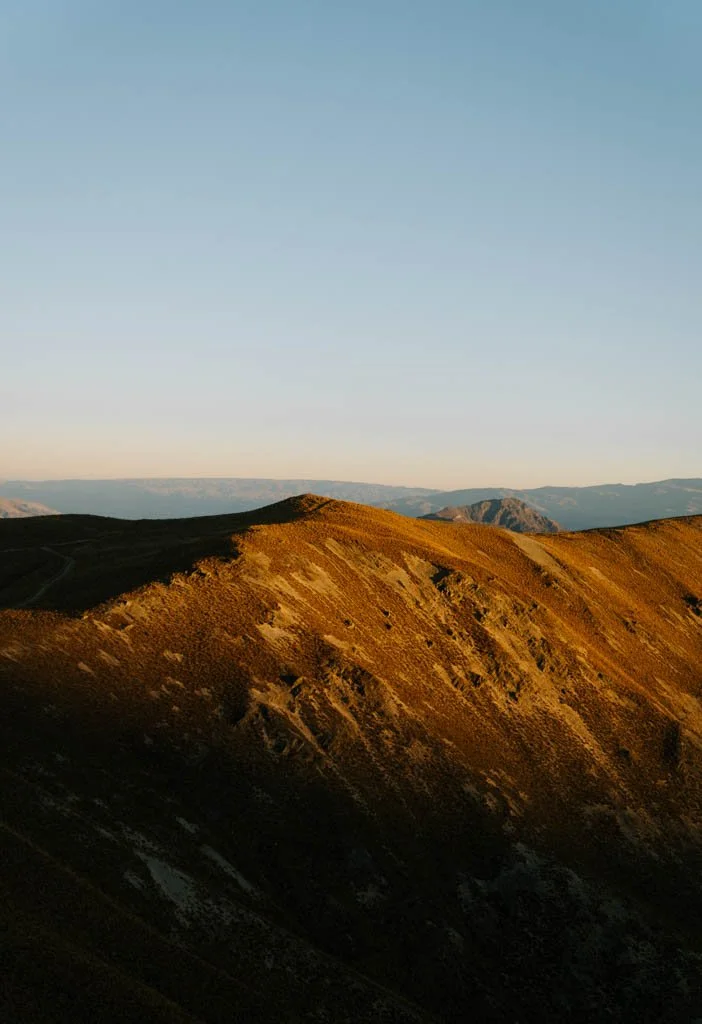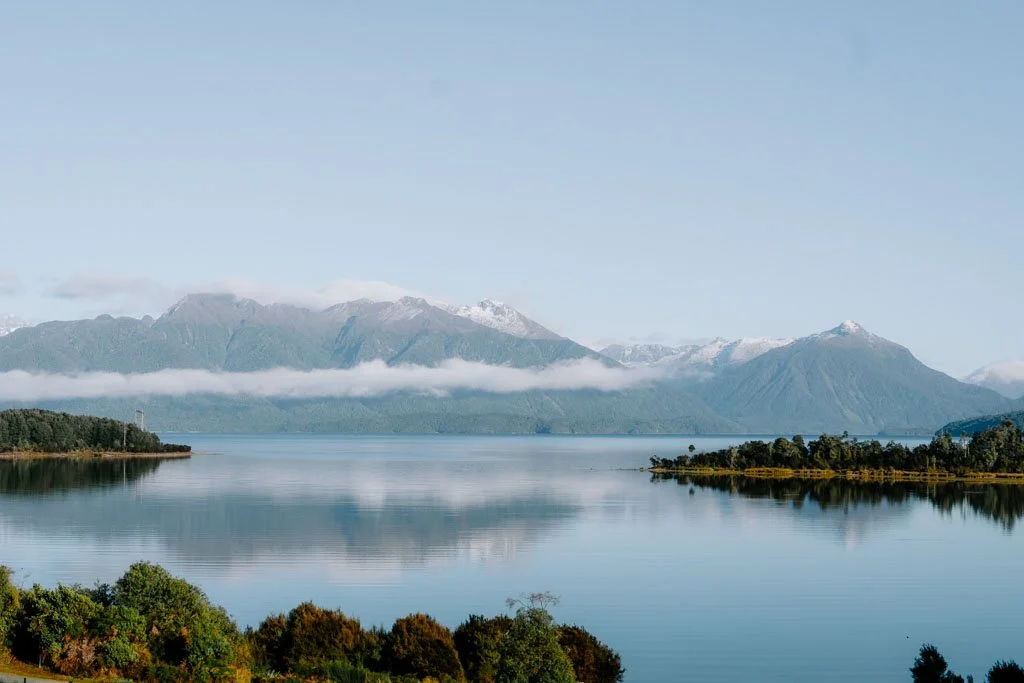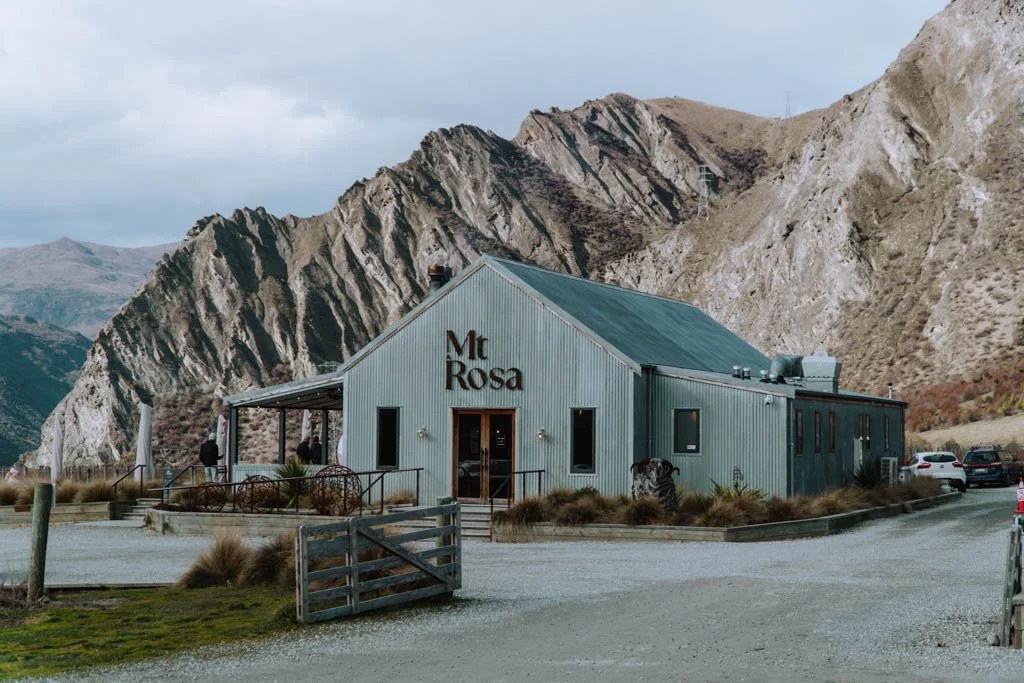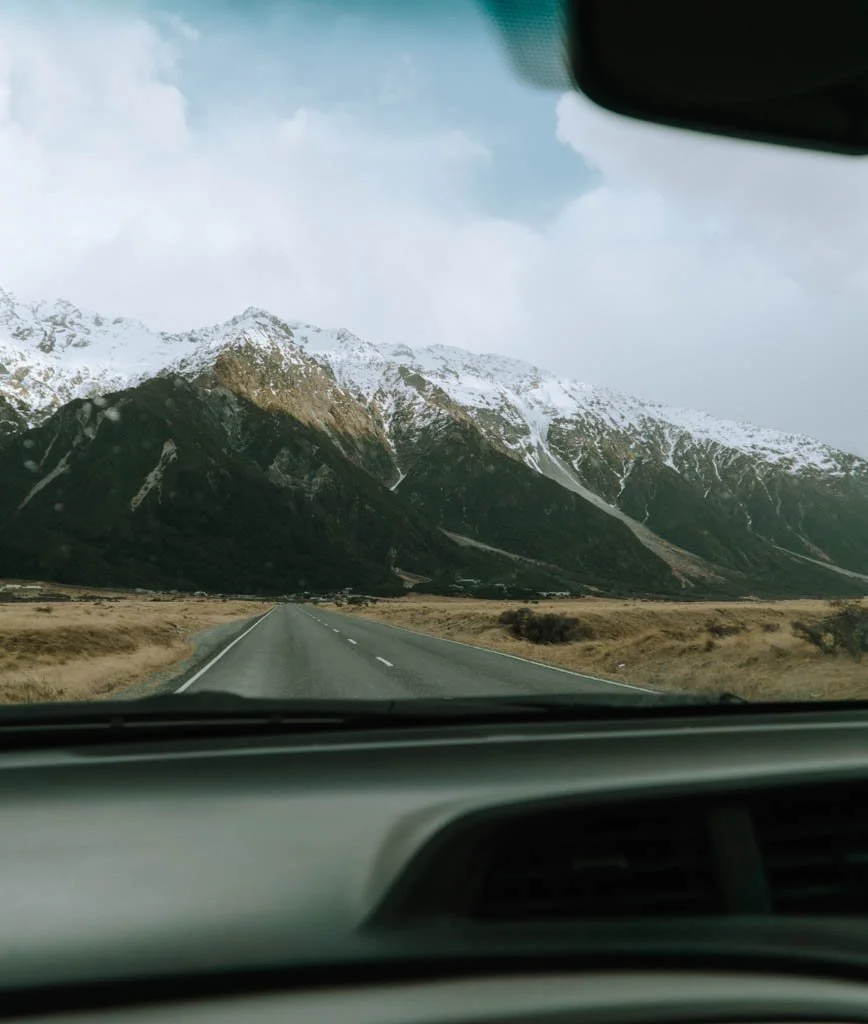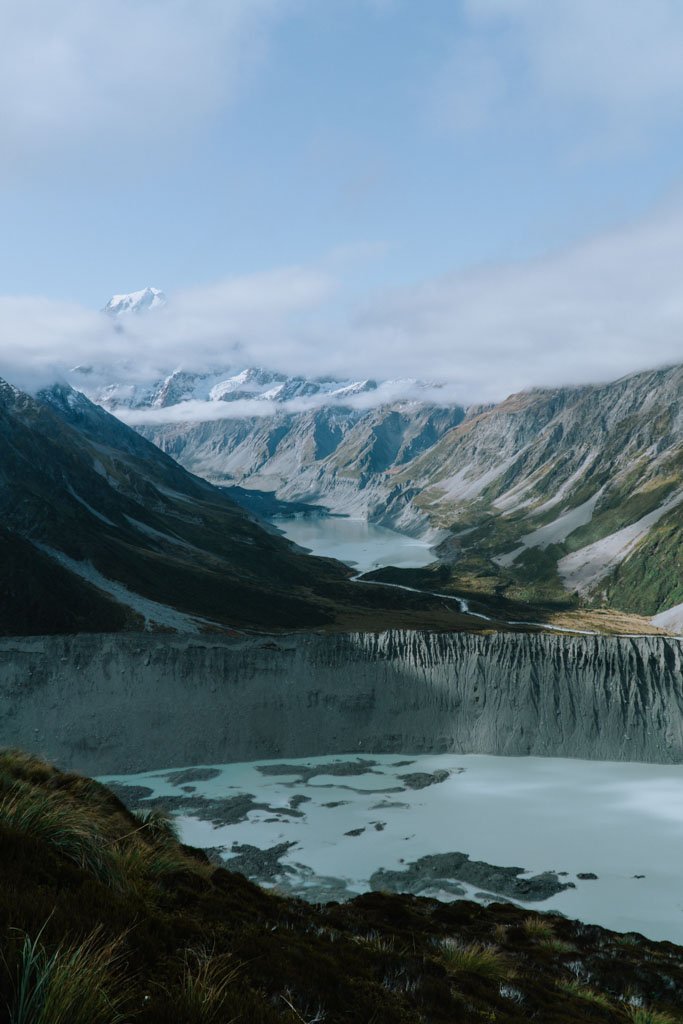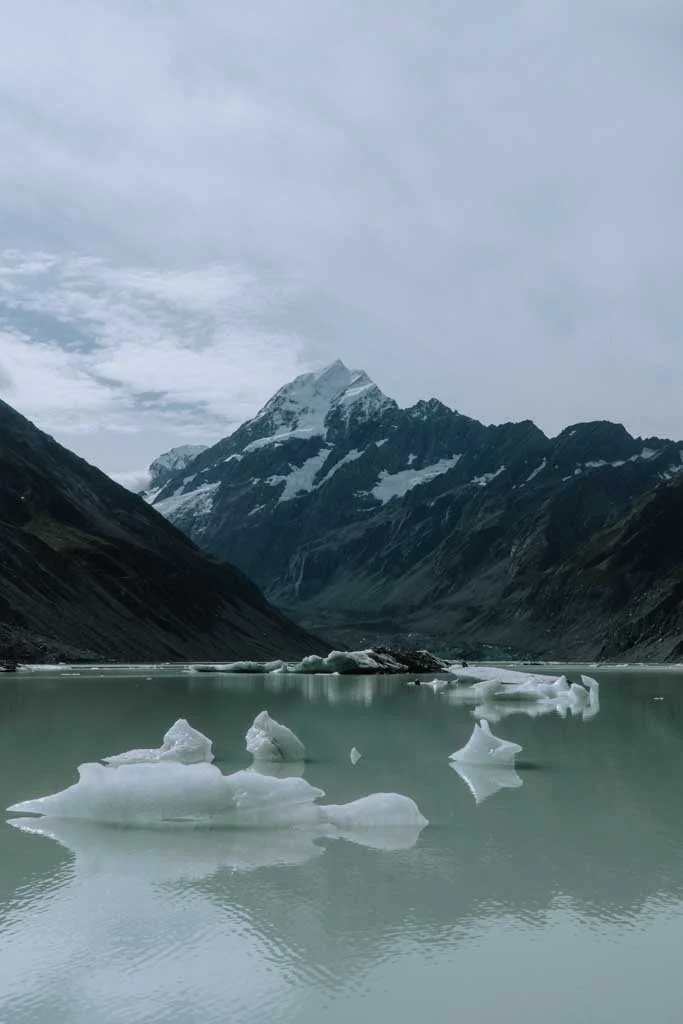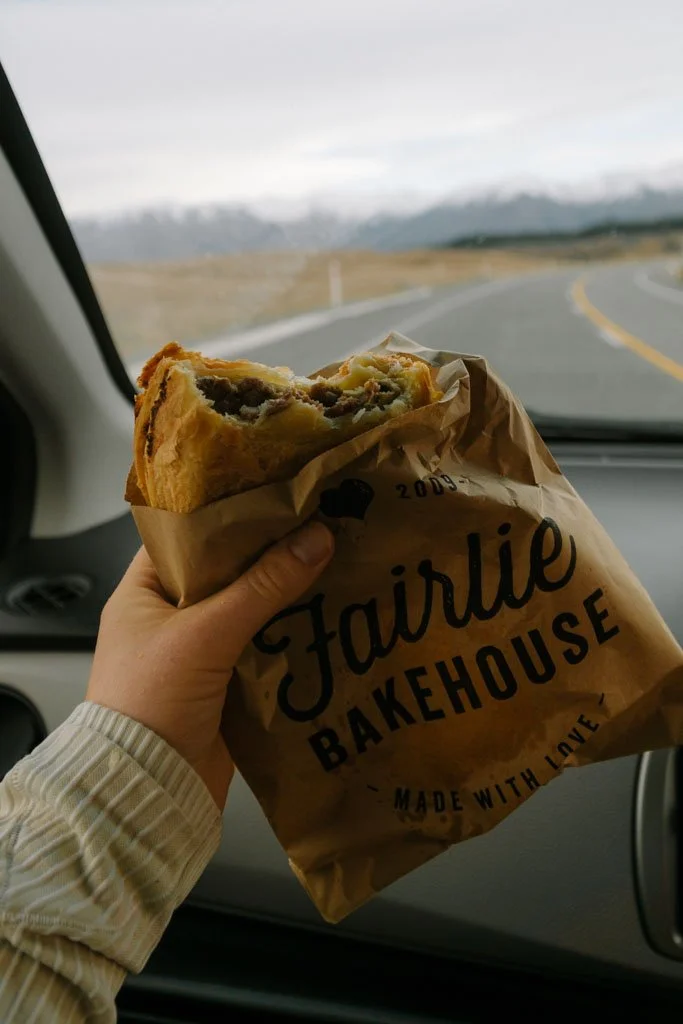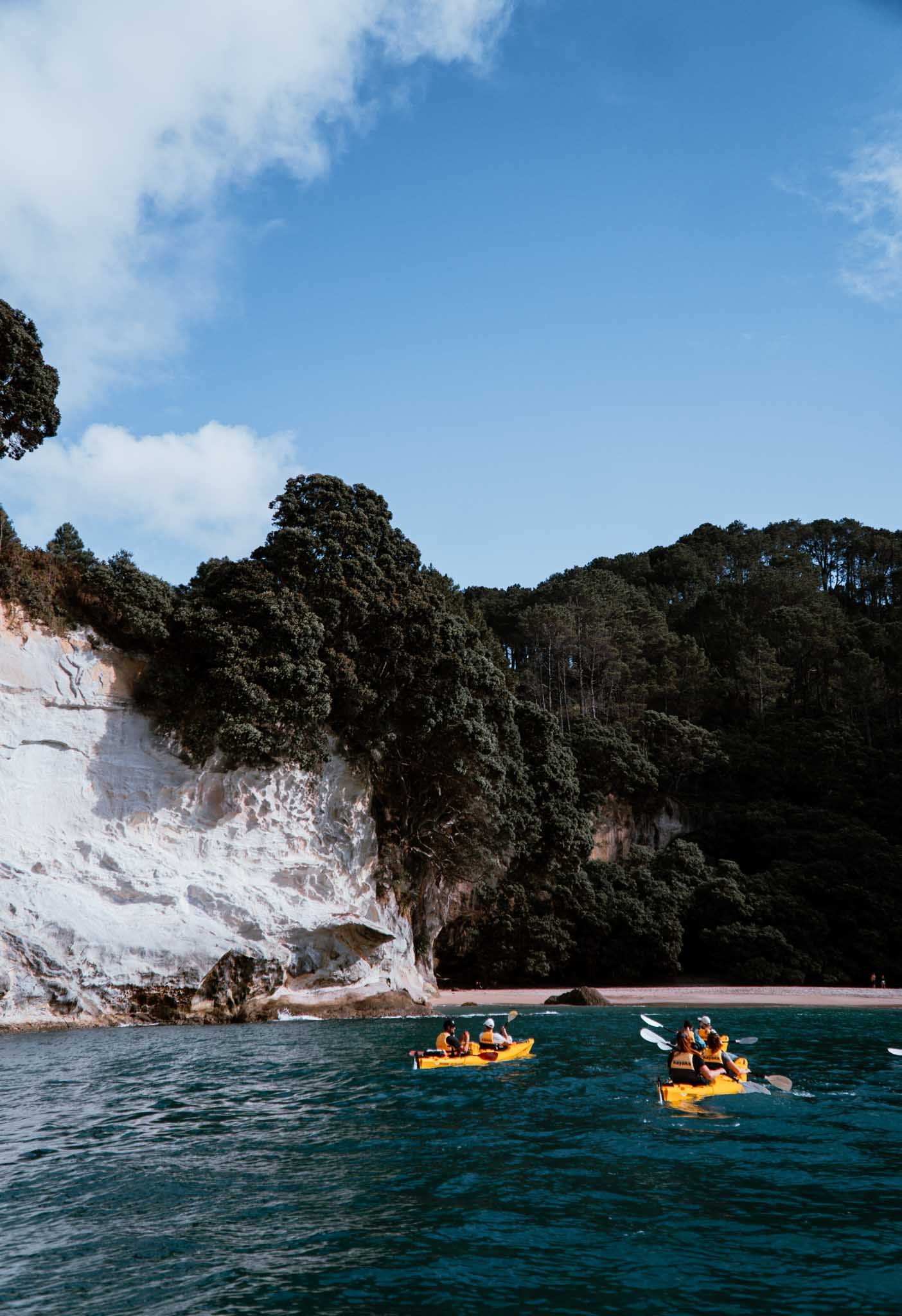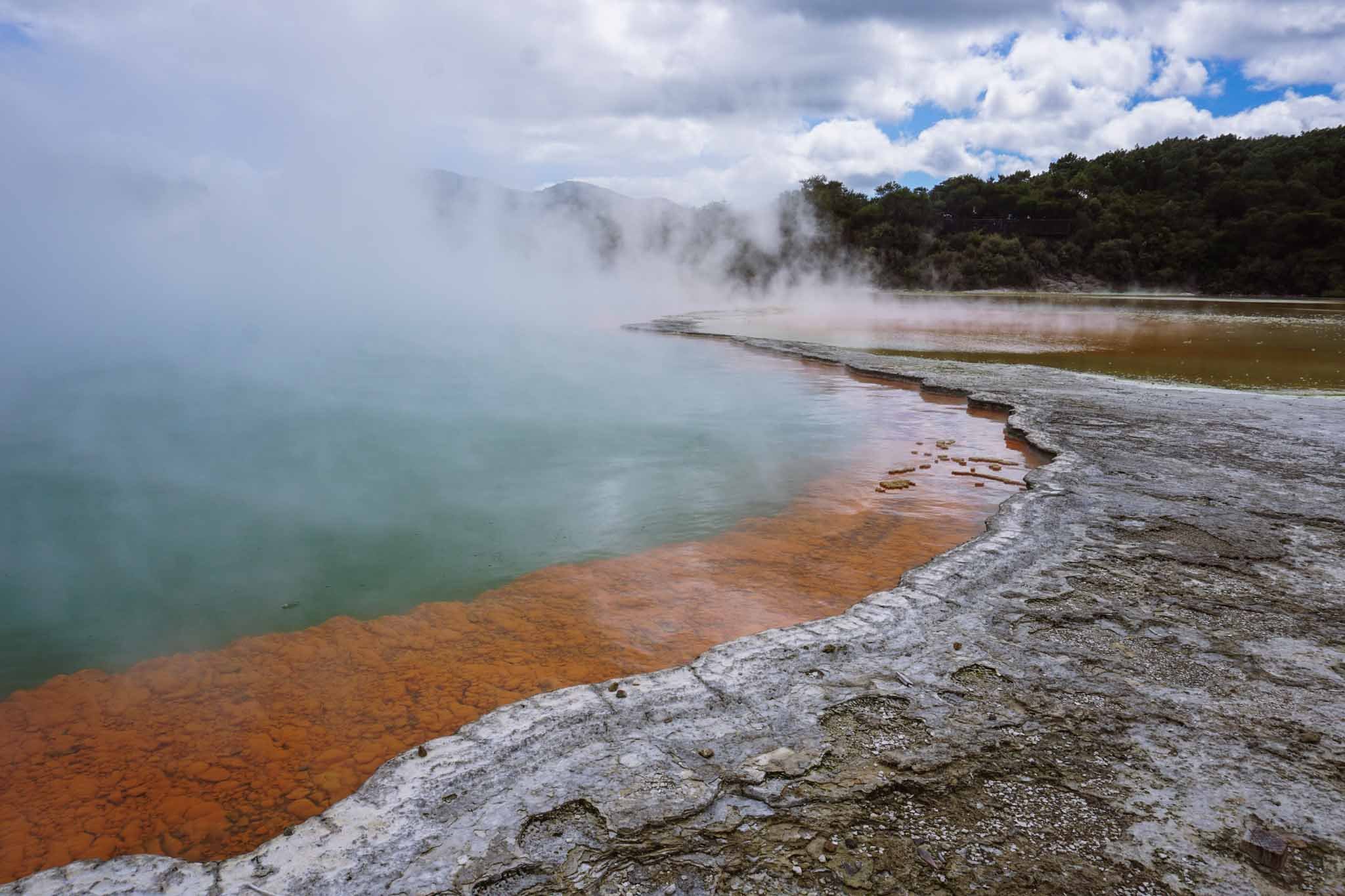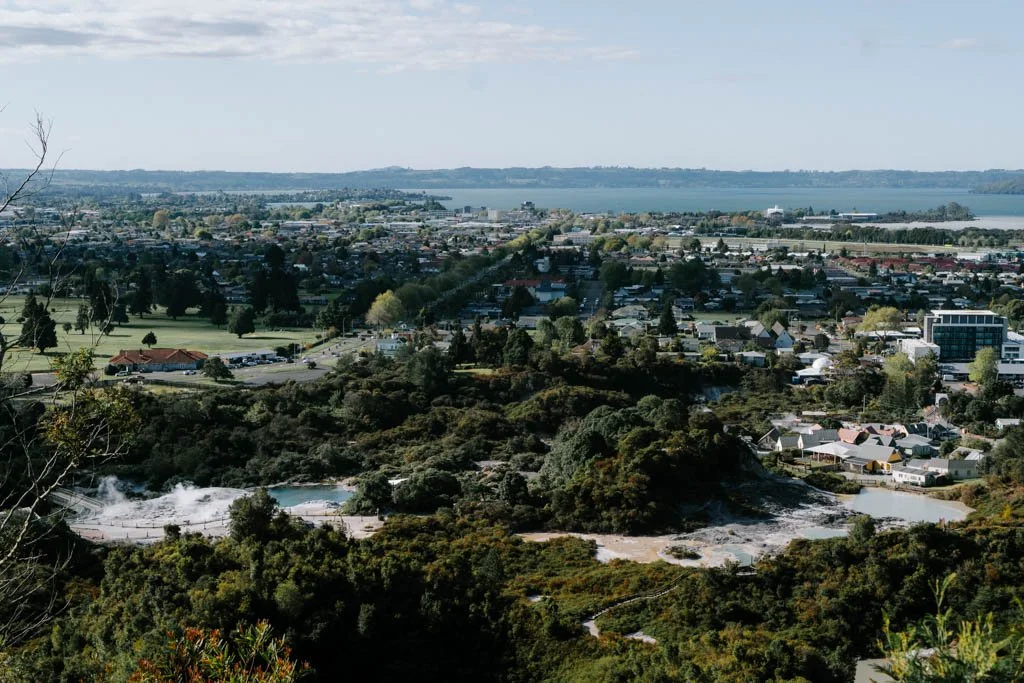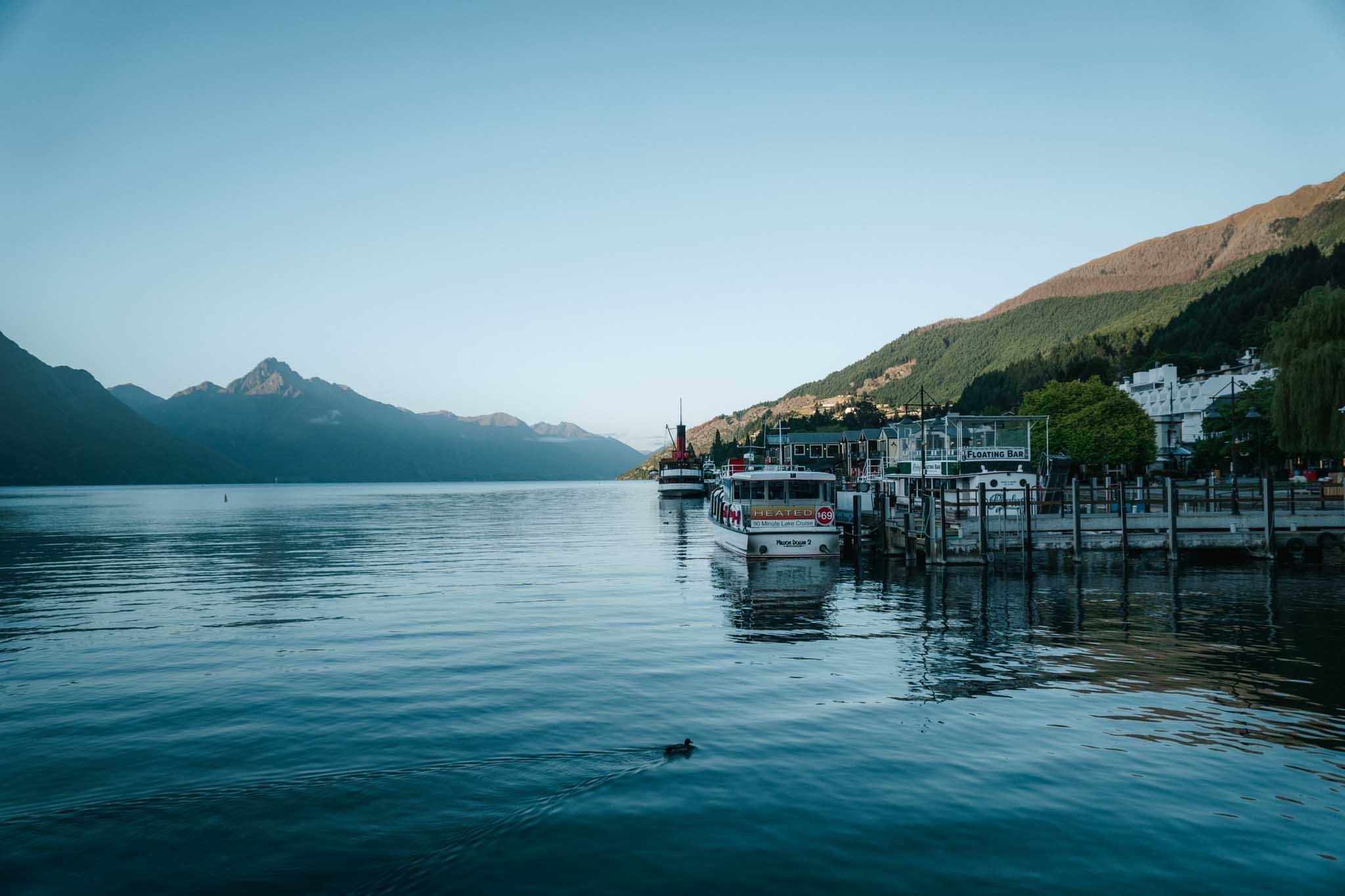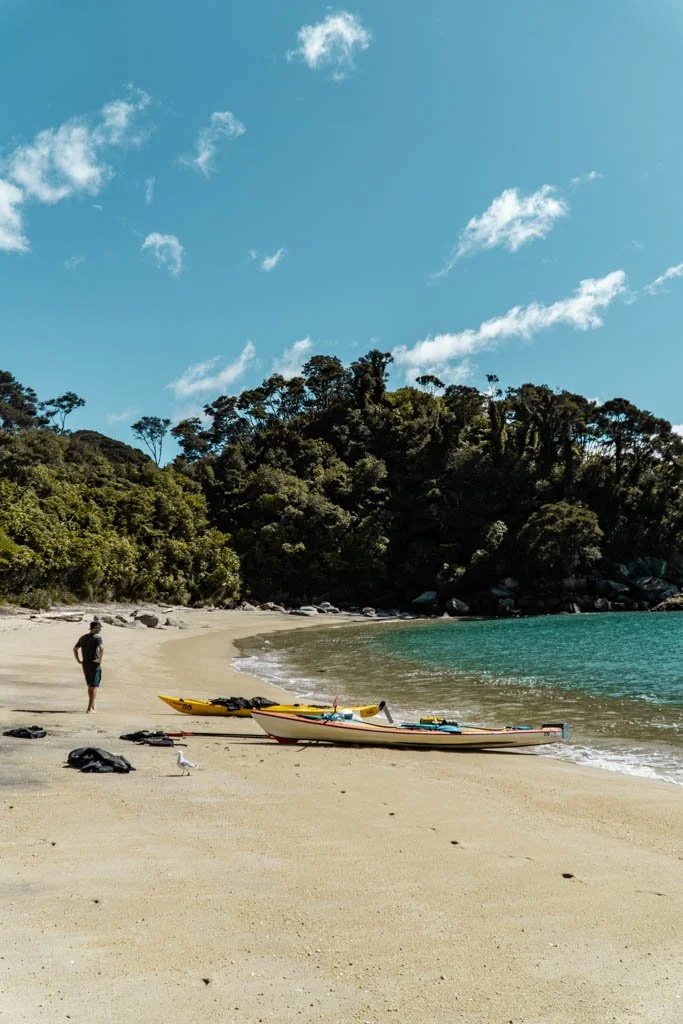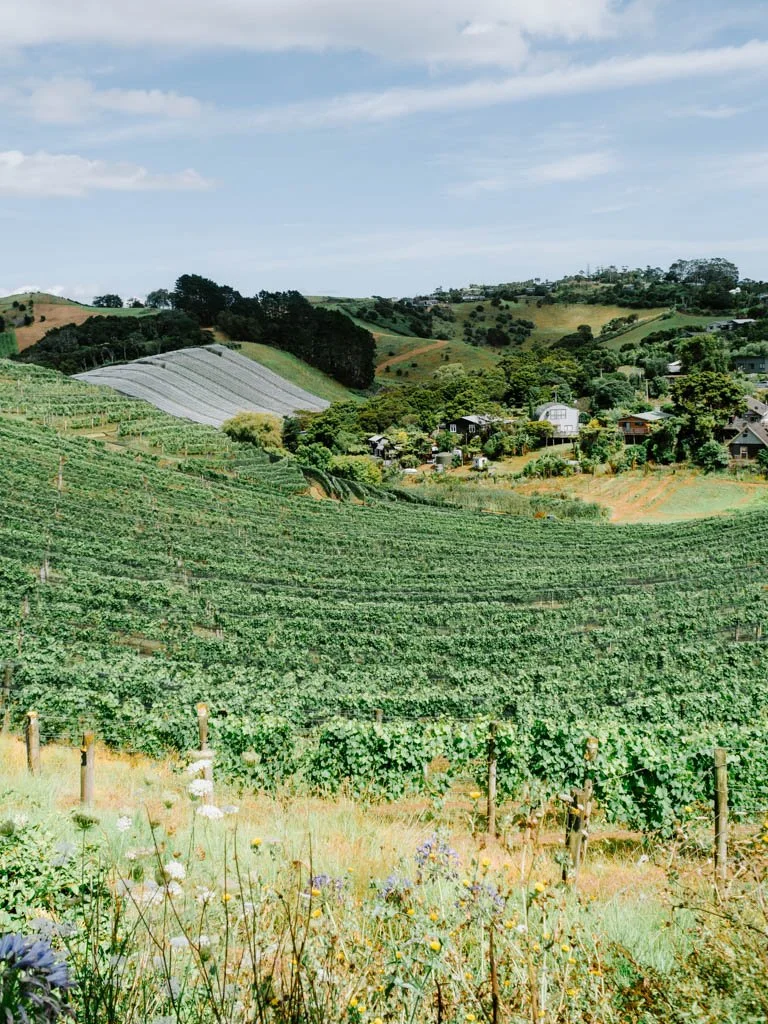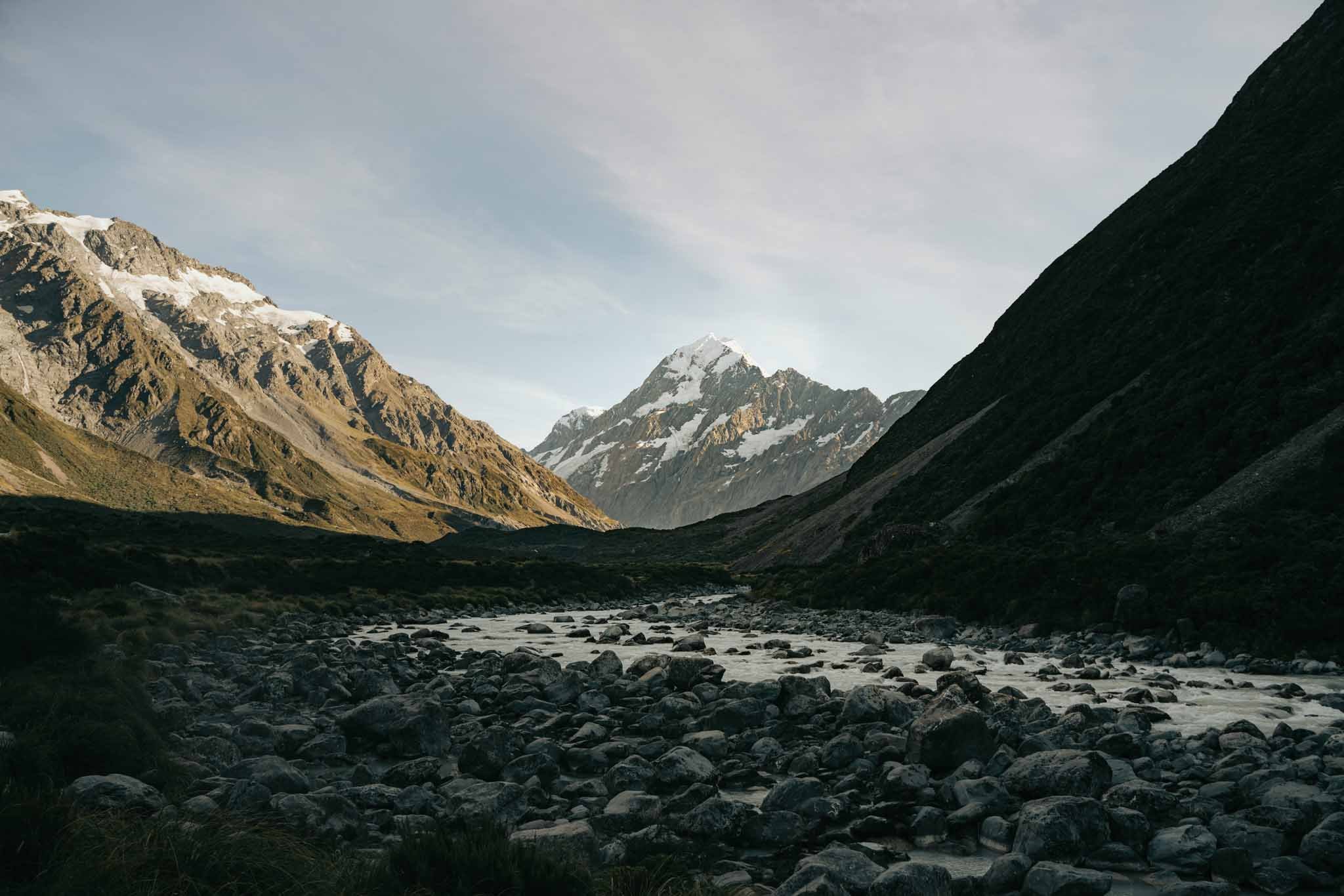A 3 week New Zealand road trip itinerary from Auckland to Christchurch
Journey from the North to the South Island in three weeks
Disclosure: This itinerary contains affiliate links, which means I may make a small commission (at no extra cost to you) if you use those links. Thanks for your support.
In late summer 2024, I loaded a sleeping mat, sleeping bag, hiking gear, and piles of clothes into the back of my car and drove south.
As far south as Invercargill.
It took me two months to get from my home in the Coromandel Peninsula all the way to the bottom of the South Island and back. New Zealand is not small, and covering that much distance took time, a painful amount of money at the petrol pump, and a few minor car repairs.
At the peak of Ben Lomond, near Queenstown
Unless you’re very lucky, you probably don’t have two months.
But, you might have three weeks. If you do have this much time up your sleeve, and you’re game for an epic road trip, you can see a lot of both the North and South Islands.
This itinerary follows routes I’ve travelled and my favourite places to stop. It’s not the exact route I took to Invercargill, but a mash up of tips and highlights from this and other trips. That wasn’t the first time I’ve driven the length of the country, and it won’t be the last; no matter how many times I set off around New Zealand, there are still more places to discover.
This itinerary does skip past a few of the more famous stops around New Zealand (I have never been to Hobbiton, despite it being 1 hour from where I live, so I haven’t included that here).
Also worth noting is that I don’t usually do a lot of high-adrenaline activities. I am petrified of heights and prefer hikes, beaches, surfing, and generally discovering the magic of New Zealand’s nature.
If you also enjoy just being in a place, and avoiding anywhere that feels overly commercial, you might enjoy my suggestions. I hope you do!
Itinerary overview
Aoraki/Mount Cook National Park
This is a fast-paced itinerary, which in reality may not suit you — building in time to relax is important, too.
I have tried to include notes on how you might slow this down, and what you might skip past. This is more of a starting point than a perfect template to follow. For example, you could miss Waitomo and go straight to Rotorua for three days. Or, skip Rotorua and go straight to Tongariro National Park from Waitomo.
Or you may want to spend more time in Fiordland and skip Aoraki/Mount Cook (or vice versa).
How you travel can impact how feasible this pace is. If you’re in a campervan, picking up and moving is much easier, and you don’t have to deal with constantly checking in or out of places.
But, I do think it’s possible to pack a lot in if you want to. This is more or less how I travel; moving a lot, waking up early when I need to, getting a bit grubby when I need to.
Day 1: Auckland
Day 2: Waitomo
Day 3 & 4: Rotorua
Day 5: Taupo
Day 6: Tongariro National Park
Day 7: Wellington
Day 8: Ferry to Picton
Day 9 & 10: Abel Tasman National Park
Day 11: Punakaiki
Day 12 & 13: Franz Josef
Day 14: Drive through Haast Pass to Wanaka
Day 15: Spend the day hiking in Wanaka
Day 16: Drive to Te Anau
Day 17: Visit Milford or Doubtful Sound
Day 18: Stop in Queenstown for a night
Day 19: Aoraki Mount Cook National Park
Day 20: Lake Tekapo
Day 21: Christchurch
A few quick tips for planning a 3 week New Zealand road trip
Why Auckland to Christchurch? These are the two biggest transport hubs in New Zealand, so there’s a good chance you will arrive into and leave from these cities.
If you’re picking up a campervan, Auckland and Christchurch are also where most campervan companies rent from (a select few also have pick up/drop off in Queenstown).
Starting from Auckland means you finish up in the more dramatic scenery of the South Island, but there is nothing stopping you from travelling South to North instead.
Sometimes it can be cheaper to rent campervans from Christchurch to Auckland — this can save a one-way fee, as companies need to relocate their vehicles back up north.
In three weeks of road tripping, you will spend a lot on petrol — I use Gaspy to find the cheapest fuel options and keep costs down.
Get your own, personalised itinerary
This itinerary really is just a suggested route. There’s a good chance it doesn’t cover everywhere you’re interested in seeing.
If this itinerary doesn’t look quite right for you, take a look at my itinerary planning services. I have a few different options where we can talk through your trip and find the perfect itinerary for you.
Day 1: Arriving in Auckland
Auckland city, seen from Ponsonby
Should you spend a night in Auckland, or skip it?
That depends.
If you prefer to spend your time in nature, by all means head out of town straight away. There are easily better places to spend your time.
Auckland city centre — it’s a lot like cities everywhere
Unless, that is, you’ve come off a long flight and need to rest for a night. It’s not a good idea to drive a long distance immediately after a long-haul flight, so you can rest up for a night and explore Auckland a little while you’re at it.
An easy option for your first day is to ferry across to Waiheke Island.
Waiheke has pretty beaches which are perfect for swimming
If you land in the morning, you could be in Waiheke by mid-afternoon — it’s only a 45 minute ferry ride from the centre of the city.
Once there, you could go to the beach and then a winery or two, enjoying sea views and some good food.
It’s also possible to spend your first night on the island, before catching the ferry back and picking up a rental car from the centre of Auckland City.
FEATURED STAY
Hotel Britomart
The most unique of the central city hotels
FEATURED STAY
The Convent
A very cool spot in Grey Lynn, which is ideal if you want to be just outside the concrete jungle of the city centre.
Day 2: Make your way to Waitomo
Glow worms in Spellbound’s caves
Waitomo Caves is one of the big attractions in the North Island.
The impressive network of underground chambers, rivers, and glow worm caverns set the scene for all kinds of adventures.
If you want to admire glow worms in a sedate way and have a gentle raft around an underground pool, Spellbound is an excellent choice. If you want something slightly more active, try the tour of an off-the-beaten-track cave system offered by Down to Earth.
If you would prefer to be floating around the caves in an inner ring, with a bit of caving, abseiling and ziplining thrown in, the black water rafting tour really ups the ante.
ACTIVITY HIGHLIGHT
The Black Abyss Ultimate Caving Experience
Abseiling, ziplining, floating in inner tubes beneath starry glow worms, and sloshing through caves — this trip really covered all the bases.
I loved the Black Abyss tour, which was even wilder than I was expecting, with a good combination of adrenaline (abseiling), glow worms (the rafting) and caving (climbing up underground waterfalls).
The only Waitomo tour I would say to steer clear of is the standard Waitomo Caves Tour run in the largest (and busiest) of the caves. It’s not a particularly enjoyable experience, as you’ll be funnelled into large groups and shuffled around the caves in a constant stream of visitors.
Waitomo is around 2.5 hours south of Auckland, so you could aim for an afternoon tour in whatever flavour you prefer.
ITINERARY NOTES
If you’re mostly interested in seeing glow worms, and caving holds less of an appeal for you, it’s also possible to see glow worms while in Rotorua — there is a lovely option to go kayaking at night and see them in small caves alongside a lake.
Go for that option, and you can skip past Waitomo, straight to Rotorua.
Equally, if the Maori cultural experiences and thermal springs of Rotorua don’t appeal, you could head directly from Waitomo to Tongariro National Park, where you will have the opportunity to see colourful pools and volcanic craters on the Tongariro Crossing.
Day 3: Make your way from Waitomo to Rotorua
A native kaka parrot at Sanctuary Mountain
From Waitomo, it’s a two hour drive to Rotorua through some of the North Island’s lushest farmland.
On the way, you could stop for a short walk at Maungatautari Sanctuary Mountain, an incredible fenced sanctuary (with allegedly the largest predator-proof fence in the Southern Hemisphere). There you can go for a walk in the native forest and look for native birds which couldn’t survive outside of the fence.
There’s a pretty good chance of seeing kaka, one of our large parrots, and I was also stunned to see whiteheads, which I have never seen in the true wild.
It’s a great opportunity to learn more about conservation in New Zealand, and the battle being waged against the tide of predators threatening to overwhelm our fragile native birds. The entry fee goes towards helping the sanctuary stay affloat, so it counts as a donation to a good cause.
Another worthwhile walk is the Putaruru Blue Springs, a short and easy stroll alongside a river that is a surreal shade of blue.
Steam rising from the ground in the Maori village of Ohinemutu
If you arrive into Rotorua in the afternoon, you can go for a walk around the lakefront, either at Ohinemutu or Sulphur Point, to see active geothermal features right in town.
Kuirau Park is another place where you can see mud pools and thermal foot baths for free.
If you’re up for a walk of around an hour and a half, you can connect all three — start in Kuirau Park and walk towards Ohinemutu. Follow the lakefront around until you reach Hinemaru street, then hang a right to make your way through the Government Gardens.
A performer at Te Pa Tu Maori village
If you’re up for an evening activity, a hangi dinner and a show at Te Pa Tu is a good option. Although it is a little commercialised, and the food maybe wasn’t as good as I wanted it to be, it’s still a good way to get a taster of Maori culture, traditions, and cuisine.
WHERE TO EAT IN ROTORUA
Sabroso, a woman owned latin restaurant
Poco Tapas and Wine, a little owner operated spot
WHERE TO STAY IN ROTORUA
There are a couple of great options for campervans near Rotorua. Orakei Korako offers camping in their carpark for free, if you pay to visit the park. You can park here overnight and visit the park first thing in the morning.
If you stay at the Waikite Valley Thermal Pools Campsite, access to the hot pools is included in the campsite fee, and you get access to the pools before the general public in the morning.
Day 4: Spend the day exploring Rotorua
A full day in Rotorua will give you the chance to visit one of the geothermal parks in the area.
I recommend Waimangu Valley over Wai O Tapu, which is arguably the most popular park in the area.
Waimangu is quieter, and involves a nicer walk. There’s also the option of kayaking past steaming cliffs.
Another great option is the peaceful Orakei Korako, a peaceful and quiet location out of reach of the tour buses which deposit crowds at more popular spots closer to Rotorua town.
There are plenty of other activities you can do in Rotorua as well; my favourite things are the Wingspan Bird of Prey Centre, swimming at Blue Lake, and walking to Tarawera Falls.
Or if you like thrills, you could raft off the highest commercially rafted waterfall in the world.
There are plenty of hot pools to choose from as well.
A boiling hot spring at Waikite Valley
I prefer the wild ones, like the hot stream at Hot N Cold. Following that, Waikite Valley is a great lower key option, or the Lake Rotoiti hot pools, which are accessible via water only. The Polynesian Spa is the most accessible option, located right in the middle of town.
Day 5: Head to Taupo
The geothermal parks — Wai O Tapu, Waimangu, and Orakei Korako — are located south of Rotorua, so you could also look at visiting them on your way down to Taupo.
Taupo is a nice enough little town on the lakefront.
It’s pretty, but for some reason the lakefront restaurants are mostly fast food. If you want to enjoy what might be New Zealand’s most scenic Burger Fuel, this is the spot. To be honest this feels like such a missed opportunity — it could be a stunning place and instead the town feels bland.
In the area around Taupo, the highlights are Huka Falls and the Aratiatia Rapids, where each day, water is released from the dam and it rushes through the gorge below.
I also love walking alongside the Waikato river in the Hipapatua Reserve, which also has some beautiful places to swim in summer.
A beautiful river swimming spot near Taupo
There is also the Mine Bay Maori Rock carvings if you want to get out on the water (you can only reach the carving via boat).
I enjoyed a lunch and coffee break at Replete Cafe and Store — it’s a lovely little spot.
None of these things are essentials, though. I think you can comfortably skip through Taupo and keep driving south if you find accommodation closer to Tongariro National Park.
That can be tricky though — Taupo is the nearest large town. Other places you might find somewhere to stay are Turangi, a small town at the southern end of Taupo lake, or Raurimu, which is little more than a cluster of houses.
Taupo definitely has the most options for places to stay before hiking in Tongariro, so it’s possible to stop there for a night and carry on down to Tongariro the next day.
Day 6: Visit Tongariro National Park
Mount Ruapehu at sunrise
With a full day dedicated to exploring Tongariro National Park, you can choose from a few options.
The Tongariro Crossing in winter
If you’re fit and up for a full day of hiking, the Tongariro Crossing is the premier walk.
It is truly spectacular, with the Red Crater and Emerald Lakes stealing the show. But, it is a demanding walk and as well as the time needed to walk it, you might feel exhausted the following day as well.
You’ll also need transport to and/or from the starting point. I recommend parking at the end and getting a shuttle to the start, so you’re not on a schedule to reach the end of the track.
A less demanding, but still rewarding, option is Tama Lakes. This is a five hour walk that is mostly flat, but with stunning views of both Ngauruhoe and Ruapehu.
A shorter option still is the Taranaki Falls track, which is a well-graded loop to an impressive waterfall.
After hiking in the park, you could stay in Ohakune, a ski resort town on the southern fringe of the national park.
Sunset on Ruapehu, as seen from Ohakune
Ohakune really comes alive in winter, but I still enjoy the mountain resort feel of the town in summer. In the evening, you can watch the sunset light Ruapehu up in shades of red and gold.
FEATURED STAY
Powerhorn Chateau
A rustic stay characterised by wood-lined rooms and leather armchairs. I liked the cosy atmosphere and that there were walking tracks directly across from the hotel.
Day 7: Drive to Wellington with a stop in Whanganui
From Ohakune, you could beeline for Wellington (about 3.5 hours driving) if you want to have the afternoon in the capital city.
If you are interested in a detour, consider going via Whanganui. It only adds a little driving time, and Whanganui is a delightfully unexpected stop.
I first visited on a guidebook assignment; Whanganui is not a town I would have chosen to visit otherwise. It took me completely by surprise.
The town centre of Whanganui is small and easily walkable. Head to Drews Ave for stroll; the
A highlight of Whanganui is New Zealand Glassworks, the national centre for glass art. You can watch artists at work blowing glass from a mezzanine floor (entry is free) and there’s a small gallery of artworks. The glass kina paperweights are gorgeous, and would make great souvenirs.
Stop by the funky little Article Cafe for coffee, before carrying on to the capital.
Wellington is a cool city, but still just a city.
You could spend a little longer here if you want to dive deeper into New Zealand’s politics and culture — between Te Papa Museum, the Beehive, and a few other spots there is easily a day’s worth of activities — but for me, it’s usually just a place to stop for a night before or after catching the ferry.
WHERE TO STAY IN WELLINGTON
If you’re in a campervan, my favourite freedom camping spot near Wellington is at Red Rocks Reserve. It’s right by the water and you can start the Red Rocks walk from here, which is a wonderful stroll along the coast.
FEATURED STAY
The Intrepid
A former chocolate factory, renovated in a way that embraces its industrial past.
Day 8: Take the ferry to Picton, and explore some of the Marlborough Sounds
The ferry between the North and South islands
The ferry from Wellington to Picton takes around 4.5 hours, so it usually ends up taking up a lot of the day — although most of my ferry crossings have been in the middle of the night, as I always end up booking late and having to take the last available slots.
If you don’t want to sail at 2am, I recommend booking in advance. And I really don’t recommend sailing at 2am, not only because of the lack of sleep, but because the crossing is beautiful.
Interislander and Bluebridge are the two ferry companies, pretty similar in terms of price and service, except Bluebridge leaves from the centre of Wellington and Interislander from a little further out.
I usually just compare both companies and pick the best price/time; they both have several sailings every day. The process of catching the ferry with a vehicle is also nice and straightforward, they really guide you through it (I was very nervous about that the first time I took it!)
WHERE TO STAY AFTER CATCHING THE FERRY
Picton is a pretty little town but there’s not much there beyond a couple of short walks.
If you’re up for a little more boat travel, Hopewell Lodge is an amazing place to stay in the Marlborough Sounds.
If you’re camping, I highly recommend the Pelorus Bridge campground. Even if you’re not camping, you should stop here for the short walks and a swim in the glorious river.
FEATURED STAY
Hopewell Lodge
A family-run lodge deep in the Marlborough Sounds.
Day 9: Head to Abel Tasman National Park
After waking up somewhere in the Marlborough Sounds, you could enjoy a slow morning before heading across to Abel Tasman National Park.
The perfectly clear and ice-cold Pelorus River
I love stopping by Pelorus Bridge on the drive through the Marlborough region. The river there is glass bottle green and just as clear. It’s icy cold, but I can never resist a dip.
Closer to Abel Tasman is another favourite spot for a swim; the Riwaka Resurgence. The spring there comes straight out of the ground and plunging in will take your breath away, it’s so cold.
The easiest place to find accommodation near Abel Tasman National Park is Kaiteriteri, but I prefer Marahau — it’s a much smaller village, and a lot more laid back than Kaiteriteri, which is a fairly developed holiday destination.
If you stay in Marahau on a Thursday night, check the Park Cafe’s open mic night. It’s wholesome local fun.
Admittedly, Kaiteriteri does have a much better beach for swimming, though. Spend an afternoon lazing on the golden sand, or go for a short walk to the famous Split Apple Rock, which is another great place for a swim.
Day 10: Spend the day exploring Abel Tasman National Park
Abel Tasman National Park is a truly stunning spot at the top of the South Island, with golden beaches strung out along the coastline.
You can explore the park via the Abel Tasman Coastal Walk, one of New Zealand’s Great Walks. The track runs from one end of the park to the other, but you can choose to walk just a section, with the help of water taxis; there are a number of combinations to choose from, where you can get dropped off at one bay and picked up at another.
The calm bays are perfect for swimming. While walking the track in summer, you’ll be tempted strip off and jump into the sea at every opportunity.
Abel Tasman is also ripe for exploration via kayak. Paddle along the coast and pull in at any beach that takes your fancy. Many are only accessible from the water, which means you’ll have your own exclusive slice of paradise.
Day 11: Drive to Punakaiki
From Abel Tasman, it’s a decent drive through to the West Coast of the South Island — around four hours. But, it’s a trek worth making.
The West Coast of the South Island is one of my favourite parts of the whole country.
It’s wild and beautiful.
The section of road just north and south of Punakaiki is possibly the most scenic bit of highway in New Zealand. At points, the road is so close to the water’s edge it seems in danger of crumbling onto the driftwood strewn beach.
Punakaiki itself is a perfect little microcosm of what makes the region special. Caught between Paparoa National Park and the wild Tasman Sea, Punakaiki is famous for the pancake rocks and blowholes the waves have carved out of soft limestone.
The Punakaiki Pancake Rocks and Blowholes walk is a 20 minute loop around a well-maintained track.
The rocks have been weathered in such a way they resemble stacked pancakes. Set against the backdrop of the forested West Coast, these rock formations are an impressive sight.
The blowholes are fun too — at high tide, water surges through the rock caverns and bursts upwards into the air.
Another highlight of Punakaiki is the Porari River Trail.
The track follows the boulder-studded river through thick nikau forest. It’s a gorgeous walk, and you can stop and swim at a number of points.
The track eventually reaches the Inland Pack Track, and you can either turn around and head back or make a loop by following the Inland Pack Track around to where it exits by the Punakaiki River.
WHERE TO STAY IN PUNAKAIKI:
Woodpecker Bay Bach.
Day 12: Make your way down to Franz Josef, via Okarito
From Punakaiki, it’s only a couple of hours driving down the coast to reach Franz Josef.
On the way, you can stop in at Hoktika, a small town famous for its pounamu, or greenstone. It’s also the setting for Eleanor Catton’s book The Luminaries, which makes this a great pre-departure read. She paints vivid pictures of the ravaged beaches and damp climes of the area.
Hokitika Gorge
A small detour inland will take you to the Hokitika Gorge, which is a beautiful short walk.
Other than the gorge, there’s not a great deal to stop for before you reach glacier country.
Day 13: Hike in Franz Josef
Heli hiking on Franz Josef glacier
The view from Alex Knob
Franz Josef glacier and Fox glacier are twin rivers of ice on the West Coast of the South Island.
Despite the massive loss of ice in the past decade, both glaciers are incredibly impressive. Even more so because you can see them with relatively little effort; Fox Glacier is visible from the road.
If you want to get closer, there are short walks to viewpoints, or longer hikes to surrounding peaks for even better views.
Hike near Franz:
Franz Josef viewpoint, 30 minutes return. A nice walk, but busy and you’re pretty far from the glacier.
Alex Knob Track, 8 hours return. I think this was my favourite.
Roberts Point Track, 5 hours return. This one gets you closer to the glacier and has cool swing bridges along the way.
Near Fox:
The South Side walkway, 2 hours return. This one is worth doing for the forest views alone.
Mt Fox Route, 8 hours return (but it’s a very rough track). If you want a less travelled route, this one is amazing.
Just check your expectations — there’s a good chance it will be rainy or cloudy and the glaciers will be hiding from view.
This is the wettest part of New Zealand, after all.
Even if you can’t see the glaciers, the forest in this region is incredible, rich in undergrowth and emerald moss. It has a truly enchanted feel, as if nymphs and fairies are hiding behind every mossy log.
Nothing can beat walking on the ice though.
If it’s within your budget and the weather gods are on your side, I definitely recommend heli hiking on one of the glaciers The heli ride up the valley is short and sweet, and the hike is also pretty short (more of a slow amble across the ice), but standing on the glacier is pretty unbeatable.
Of the twin towns below the glaciers, Franz Josef is the prettier and more convenient base. There are more big hotels in Franz, and more options for eating.
Fox Glacier is a smaller town, which feels more like a typical New Zealand village.
If you have an extra day in glacier country, I recommend stopping by Okarito.
It’s one of my favourite places on the West Coast, and it’s hard to explain why. Maybe it’s the white herons that are cast like ghosts in the dark waters of the lagoon, or the sleepy nature of a tiny coastal town.
I think it has something to do with the wild feeling of the place, which is unique as it’s one of the only places where the mountains flow to the sea uninterrupted by human activity.
The Okarito walkway is a stunning walk, and if you loop back along the beach around dusk, you might see Hector’s Dolphins.
If you have enough time, try kayaking on the lagoon to spot birds.
Day 14: Drive through Haast Pass to Wanaka
The drive from Franz Josef to Wanaka is one of my favourite stretches of road in the South Island.
There are lots of wonderful places to stop, both on the West Coast and in Haast Pass, so I would allow a full day for this trip, even if Google Maps only says four hours.
First, you’ll pass through Fox Glacier township, so it’s worth stopping by to check out some of the walks there, as well:
The South Side walkway, 2 hours return. This one is worth doing for the forest views alone.
Mt Fox Route, 8 hours return (but it’s a very rough track). If you want a less travelled route, this one is amazing. You would have to start quite early.
The short walk around Lake Matheson is stunning, and there’s a roadside lookout nearby where you can see Fox Glacier.
Ship’s Creek
Thunder Creek Falls
Brewster Hut
Fantail Falls
Isthmus Peak
Lake Hawea
ITINERARY NOTES
If you’re in a campervan, a lovely campsite on this route is Kidd’s Bush Reserve. Waking up there and going for a swim in the crystal clear blue water of Lake Hawea was divine.
Day 15: Hike in Wanaka
Sunset colours at Isthmus Peak
Isthmus Peak
You could push on to Queenstown on this day, but it’s already a long day of driving and Wanaka is a cool little town. The setting isn’t as dramatic as Queenstown, but it’s a great base for hikes in the area.
With a full day in Wanaka, you could tackle the infamous Roy’s Peak hike — although if you do this, go at the crack of dawn. You won’t be alone up there for sunrise, but the crowds should be a little thinner. I also found it easier walking up in the dark as much of the walk is just a slog up a 4WD track. If you go during the day, be prepared to be exposed to sun the whole seven-hour hike, and take enough water with you.
WHAT TO DO IN WANAKA
One of the best things you can do in Wanaka is definitely a Wild Wire waterfall climb.
The most popular day hike near Wanaka is Roy’s Peak, but Isthmus Peak is another great option with far fewer people.
There is also the Rocky Mountain summit, which is a great option if you want a shorter walk — it’s only 3 hours return, but still delivers fabulous lake views.
Wanaka is a jumping off point for exploring Mount Aspiring National Park. If you’re looking for an adventurous way to see the park, check out Packrafting Wanaka.
If you go for a hike, recover in the Secret Sauna afterwards.
Day 16: Make your way to Te Anau
Lake Te Anau
The drive from Wanaka to Te Anau is around three hours. You’ll pass by Queenstown, so you could very easily make that your lunch spot.
If you drive through the Kawerau Gorge, you could visit one of the wineries there for lunch (if you have a patient sober driver of course).
Mt Rosa, Kinross, or Mora Wines are all excellent options for both wine tasting and food (although Mt Rosa has the most scenic setting of those three).
ITINERARY NOTES
I suggest going all the way to Te Anau to give yourself a little more time in Fiordland.
You could stop in Queenstown and visit Milford Sound as a day trip, but it makes for a very long day (four hours each way, not including stops) and you are herded through each stop along the road to Milford Sound.
Trying to drive yourself to Milford Sound from Queenstown is a big ask — if you do visit on a day trip, I recommend taking a bus trip and possibly a flight back.
Self-driving is much more accessible from Te Anau (2 hours from Milford) and even bus tours leaving from Te Anau are less arduous.
Day 17: Visit Milford or Doubtful Sound
Milford Sound, a deep fjord carved into the rugged coast of Fiordland, is one of the most popular destinations in New Zealand.
Visiting Milford Sound usually involves a boat trip on the inky dark water, to see waterfalls crashing down cliffs and wildlife such as seals and penguins.
A boat trip in Milford usually only lasts for around two hours, but you’ll need a full day to get from Te Anau to Milford Sound and back again, assuming you want to explore scenic stops along the way.
Day 18: Back to Queenstown for a night
After the wilds of Fiordland, Queenstown can be a good stop for food, wine, and perhaps a nice hotel — although be prepared to pay a premium for all of these.
Most New Zealand itineraries devote more time to Queenstown, and you could easily spend several days there.
But for me, Queenstown always ends up being something of a transit point; it’s close to Mount Aspiring National Park (via both Wanaka and Glenorchy, a small village further along the shore of Lake Wakatipu) and Fiordland, and those are the places I usually want to visit.
In Queenstown itself, you’ll find a whole host of restaurants, and a little further afield the vineyards of Central Otago. This makes for a good opportunity to break up the outdoorsy-ness.
Beyond indulging in food and wine, I do love the TSS Earnslaw lake cruise to Walter Peak Station, and highly recommend this as an evening activity, with the dinner and farm show included.
A hike up Ben Lomond is also a brilliant way to spend half a day,.
WHERE TO STAY IN QUEENSTOWN
I recommend staying Frankton or slightly out of the centre of Queenstown, to make life easier (parking is much easier in Frankton and you’ll be closer to the airport and supermarkets).
If you would rather be central, these are all good options:
Browns Boutique Hotel (locally owned)
Tahuna Pod Hostel (a great budget option or for solo travellers)
Day 19: Drive to Aoraki Mount Cook National Park
Aoraki/Mount Cook National Park is one of the most stunning locations in the whole South Island.
Plan to spend most of a day there — you’ll want time to explore the walking trails, admire the glaciers, and generally enjoy the scenery.
It’s around 3.5 hours to drive from Queenstown to Aoraki/Mount Cook, so set off early. You’ll want to stop at Lake Pukaki to check out the views, and on the road into the park.
The stretch of road from Lake Pukaki into Aoraki/Mount Cook National Park is a strong contender for the most beautiful drive in the country.
The view from Sealy Tarns
Icebergs on Hooker Lake
Once you arrive in the park, you’ll have time to tackle one of the trails. There aren’t many to choose from, but they are all spectacular.
The Hooker Valley Track is the premier short walk option; Sealy Tarns involves many, many stairs if you want more of a challenge and arguably better views; Mueller Hut sits above and beyond Sealy Tarns, for fit and experienced hikers.
I also love Kea Point, which is only an hour round trip from the carpark. The Tasman Glacier lookout is worthwhile too, if you want to lay eyes on the largest glacier in New Zealand.
FEATURED STAY
Aoraki Alpine Lodge
A basic but very serviceable place to stay, with a great shared kitchen and lounge area. With almost nowhere to eat in the park, having cooking facilities was perfect.
Day 20: Visit Aoraki, then make your way to Tekapo
Lake Tekapo
In the morning, check off any of the walks you didn’t get to the day before. Setting off early can be a good opportunity to enjoy the Hooker Valley before the day trip crowds descend.
The visitor centre at Mt Cook is also well worth visiting, it’s free but has lots of displays on the history and ecology of the area.
Sometime in the afternoon, you can make your way to Tekapo. There, you can walk around the Church of the Good Shepherd and the lakefront.
In late spring and early summer, lupins line the lakefront
Tekapo is famous for stargazing tours, so the evening could be dedicated to looking to the night sky.
Otherwise, Tekapo only needs to be a brief stop. There are places to stay and places to eat, and it’s on the way to Christchurch.
Day 21: Tekapo to Christchurch
Burke’s Pass
Burke’s Pass
Heading out of Tekapo, you’ll go past Burke’s Pass, a quirky little roadside gallery. It’s worth a stop, if you’re not in a rush.
The next classic stop on the way to Christchurch is the Fairlie Bakehouse – it’s one of the South Island’s most famous purveyors of pies, which conveniently make for an excellent road trip snack.
A Fairlie pie is a classic road trip snack
If you’re unhurried, and looking for more places to break up the trip, Geraline is a sweet little town.
The Susan Badcock Gallery is worth poking your nose into, and Cafe Verde right next door is nice for lunch. There is also the Barkers food store there too, which has free tasting samples of all their chutneys.
Beyond that, the drive to Christchurch isn’t the most scenic or exciting; the closer you get to the city, the flatter and more industrial everything becomes.
Even so, Christchurch itself is a nice enough town; if you don’t need to fly to Auckland for a night before your flight out of the country, it can make a decent last stop on your three week trip.
WHERE TO STAY IN CHRISTCHURCH
The Novotel is a great central option, right on Cathdral Square, next to the library — easy walking distance to all the central Christchurch attractions.
I did also like staying at the Bealey Quarter which was just outside the city centre, so I didn’t have to pay for parking or worry about my car during the day (I was there for a week, so that would have added up).
FEATURED STAY
The Observatory Hotel
A boutique, design focused stay in the Christchurch Arts Centre.
This post is about:
Thank you for reading
You being here is what makes my life as a travel writer possible, so thank you. I hope this has been helpful and you have come away with a better idea of where to stop between Auckland and Christchurch.
All of the photos and words (and spelling mistakes and other errors) on this page are mine, created without help from either AI or other humans.
My goal is to try and make sure your travels around New Zealand are the best they can be, in exchange for your support. Reading my posts, clicking my links, sharing with your friends; all of this helps me keep doing what I’m doing.
So, thank you again, and while you’re here, maybe take a look at a few more itineraries:
AUCKLAND ITINERARIES:
READ MORE




